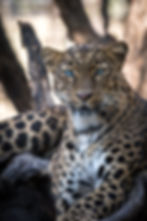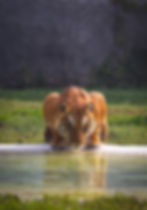
Where is Home? Maurice Sendak’s 1963 Caldecott Award-winning children’s classic, Where the Wild Things Are has sold over 19 million copies since its publication, was adapted to musical opera, and produced for film. What can a reimagined telling teach us today about our common Home?
A wild boy, Max, is the story’s focus, who is sent to bed without supper for his rambunctious behavior at home. While dressed in his wolf suit, Max delights in wreaking utter havoc. His Mother calls him “Wild Thing,” and sends him to his room. When his bedroom is mysteriously transformed into a wild forest, he sails to an island of “Wild Things,” Monsters, and is able to intimidate the Monsters and become their “King,” initiating a raucous “RUMPUS” with them in the wild. After romping with the Monsters, Max begins to long for “home.” He sends the Monsters to bed without their supper, and despite their sadness, “Oh, please don’t go; we’ll eat you up! We love you so!” Max says “NO!” and sails home. He returns to his Mother’s “still hot” supper, symbolizing the heart of comfort, refreshment from the wild, and domestic safety. The narrative begs the question, where is Max truly home?

The story’s overarching narrative, teaching children to cope with their “wild inner selves,” is represented by Max’s tantrum that sent him to bed without supper. Sendak used childhood images of his Polish immigrant relatives who had escaped the Nazi Holocaust with “crazy faces and wild, blood-stained eyes and big and yellow teeth,” to furnish the “Monsters” Max encounters and befriends before returning home. Many subtexts of the story’s plot have been considered. Because the story appeals to primal imagination, the frightful fits of emotional tumult common to the human condition, and our interface with what is “WILD” within, this story has found its home embedded deeply in our consciousness. It may still leave us wondering, where are we truly home?

If the Age of Posthumanism is teaching us anything, it is to reconsider whether humanity is the center of all drama and meaning. It is to reintroduce us to the wider “WE,” that mysterious web of life that is our true home. One Earth means we are part of one living, breathing biosphere. We are embedded in the web of life, not extraneous to it, above it, or meant to call all the shots about whether and how it exists to serve us. We are not meant to be like little “Max Kings,” who can out-wild the Wild Things, command the wilderness to “be still,” to cease its wild being to appease a childish tantrum that needs to dominate and control every wild being in the biosphere for our pleasure and amusement.












What about reimagining the story from the perspective of the Wild Things? What happens to their home if human beings are bent on their removal, silencing, or destruction? Is humanity meant to be ruler/king of creation with a wanton disregard for the common good? What if the human “terror” that comes to the wilderness wreaks havoc, creates a rumpus, and then destroys the wild habitat altogether, exterminates all the Wild Things at will, and leaves only toxic waste and carnage behind? Forget Max for a moment. Where is home for all the Wild Things?

As attacks on the environment, protected species, and public lands continues unabated, we know where the Wild Things aren’t. Wild places are disappearing from the biosphere for “resource harvesting,” leading to exploitation, pollution, and decimation. Fracking, drilling, and logging, oh my! We are no longer benevolent, if somewhat naughty child-tyrants, having our fun and maybe creating some upheaval along the way for the wider “We.” We have been operating as though we are brutal imperialist marauders, ransacking, pillaging, and raping wild places in a sort of grotesque scorched-Earth parade, without regard for the planet’s most vulnerable.

Isn’t it time we return to our inner wild-scape, cry aloud with outrage, and weep with compassion for what is lost, and for what we are destroying in the name of productivity and profit? Isn’t it time to commence the Wild “Rumpus” of Joy that ensues whenever we immerse ourselves in Nature’s embrace?

Isn’t it time our “inner Max” returns to our true home, where we can be safe and loved among our creature-kin and arbor elders, and they in return can feel our love, protection and reverence? Our true home is the sacred wilderness, lush rainforests, fertile valleys, stunning mountains, refreshing waterways, oceans and jungles teeming with wild dwellers in vast beauty and variety. Our true home connects us with those profoundly energetic, wild and imaginative “centers” of consciousness and conscience, where we connect with all creation as part of one web of life. Our true home is enmeshed with what we eat, what we drink, who we make a Wild Rumpus with, and who/how we love. “Oh, please don’t go! We’ll eat you up! We love you so!”
We know where the Wild Things aren’t. Isn’t it time to discover once again where they are?


